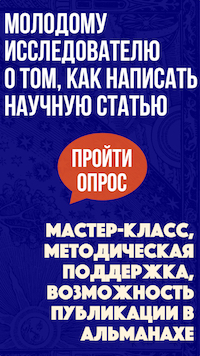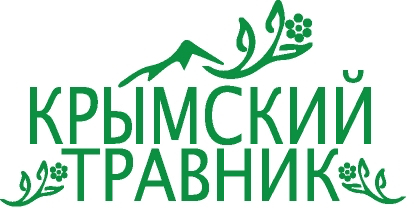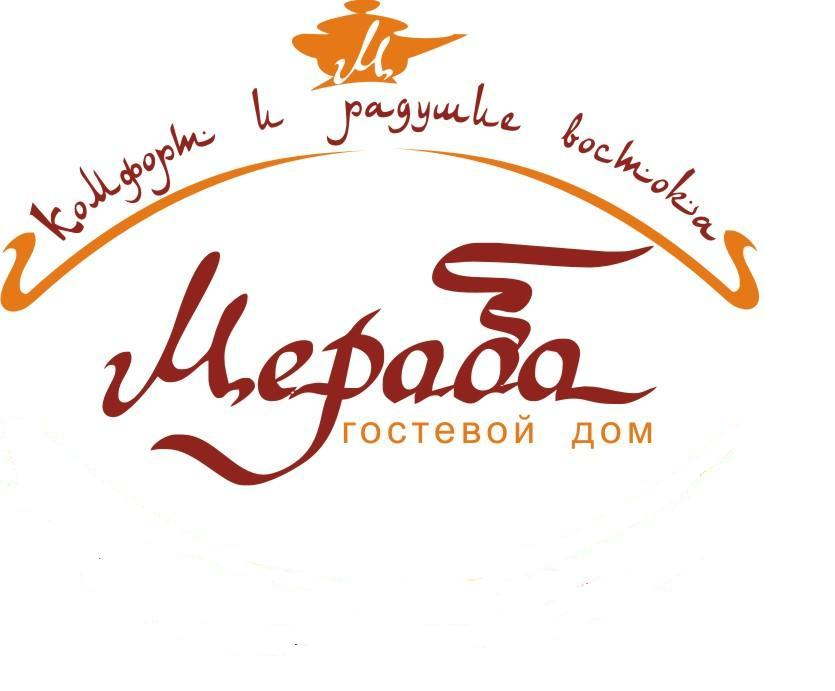МОЛОДЁЖНЫЙ ПРОЕКТ ДЛЯ ТЕХ, КТО ДЕЛАЕТ ПЕРВЫЕ ШАГИ В НАУКЕ
/components/bitrix/system.auth.form/auth_alm/images/login.gif) Войти
Войти /components/bitrix/system.auth.form/auth_alm/images/register.gif) Регистрация
Регистрация
Войти в корпоративную почту как автор/член редколлегии/рецензент журнала
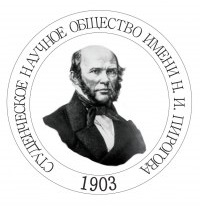


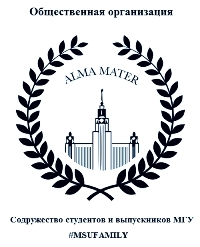
ТЕРРИТОРИЯ ВРЕМЕНИ / TERRITORY OF TIME / TERRITORIUM DER ZEIT
Маляров В.Н. Российские инженерные рабочие войска в эпоху великих потрясений. Часть 1. От Первой мировой войны до Октября 17-го
Маляров Валерий Николаевич, доктор исторических наук, профессор, Военный инженерно-технический университет (Санкт-Петербург)
E-mail: valent4545@mail.ru
В статье рассматривается создание, развитие и деятельность инженерных рабочих войск, а также условия комплектования их инженерными и рабочими кадрами в период, предшествовавший Первой мировой войны, и на протяжении четырех военных лет вплоть до 25 октября 1917 г.В исследовательских целях в оборот введен ряд новых архивных документов.
Ключевые слова: Первая мировая война, русские военные инженеры, рабочие инженерные войска, Николаевская инженерная академия, оперативное оборудование территории, оборонительное строительство, тыловые работы.
Литература:
1. Архив Военно-исторического музея артиллерии, инженерных войск и войск связи (Архив ВИМАИВиВС). Ф. 24. Оп. 97/5. Д. 25.
2. Архив ВИМАИВиВС. Ф. 87. Д. 3.
3. Архив ВИМАИВиВС. Ф. 87/1. Д. 3.
4. Архив ВИМАИВиВС. Ф. 3504/13.
5. Государственный архив Российской Федерации (ГАРФ). Ф. Р-8419. Оп. 1. Д. 211.
6. Инженерный документальный фонд Военно-исторического музея артиллерии, инженерных войск и войск связи (ИДФ ВИМАИВиВС). Д. 2447, 2502.
7. Российский государственный военно-исторический архив (РГВИА). Ф. 2003. Оп. 1. Д. 691, 733.
8. РГВИА. Ф. 2005. Оп. 1. Д. 9, 50, 51, 53.
9. РГВИА. Ф. 2006. Оп. 1. Д. 19, 22.
10. РГВИА. Ф. 2043. Оп. 1. Д. 9, 241.
11. РГВИА. Ф. 2048. Оп. 1. Д. 1128
12. РГВИА. Ф. 2052. Оп. 1. Д 143, 153.
13. РГВИА. Ф. 2071. Оп. 1. Д. 16.
14. РГВИА. Ф. 2080. Оп. 1. Д. 70.
15. Российский государственный исторический архив (РГИА). РГИА. Ф. 1276. Оп. 12. Д. 1186? 1806, 1807; Оп. 20. Д. 109.
16. РГИА. Ф. 1278. Оп. 5. Д. 1234; Оп. 6. Д. 45; Оп. 7. Д. 1657.
17. Аганов С.Х., Егоров Е.П. Инженерные войска Советской Армии 1918—1945. М.: Воениздат, 1985.
18. Александров Е.Г. Краткий исторический очерк развития инженерных войск Русской армии. М.: ВИА, 1939.
19. Аманжолова Д.А. «Такое управление государством — недопустимо»: Доклад А.Ф. Керенского на закрытом заседании Государственной думы. Декабрь 1916 г. РГВИА // Исторический архив. 1997. № 2. С. 4—22.
20. Бахтурина А.Ю. Окраины Российской империи: государственное управление и национальная политика в годы Первой мировой войны (1914—1917 гг.). М.: РОССПЭН, 2004.
21. Бескровный Л.Г. Армия и флот России в начале XX в: очерки военно-экономического потенциала. М.: Наука, 1986.
22. Богатский М.Н. Военный инженер К.И. Величко (1856—1927). М.: ВИА, 1957.
23. Брусилов А.А. Мои воспоминания. М.: Воениздат, 1963.
24. Варин. К вопросу о реорганизации корпуса военных инженеров. М., 1909.
25. Величко К.И. (ред.). Военно-инженерный сборник. Материалы по истории войны 1914—1918 гг. Кн. 1—3. М.: Тип. Т-ва И.Д. Сытина, 1918—1919.
26. Военно-инженерная академия им. В.В. Куйбышева. 150 лет. М.: ВИА, 1969.
27. Военно-исторический сборник. Труды комиссии по исследованию и использованию опыта войны 1914—1918 гг. Вып. 1. М.: Типография Т-ва И.Д. Сытина, 1919.
28. Военно-энциклопедический словарь военно-строительного комплекса МО РФ. М.: Патриот, 2004.
29. Всероссийский Земский и Городской союзы. Главный по снабжению армии комитет. Очерк деятельности. М.: Типо-литография Торг. дома «И. Ефимов, Н. Желудкова и К», 1916.
30. Головин H.H. Россия в Первой мировой войне. Т. 2. Париж: Т-во Объединенных Издателей, 1939.
31. Гончаров В.Л. 1917. Разложение армии. М.: Вече, 2010.
32. Джизакское восстание 1916 г. / Предисл. А. Шестакова // Красный архив. М. 1933. № 5. С. 60—91.
33. Догадин В.М. «Два с половиной месяца в санатории...»: Из воспоминаний русского офицера В.М. Догадина / Вступ. ст., коммент. и подгот. текста к публ. З.Д. Ясман // Отечественные архивы. 2003. N 5. С. 81—94.
34. Догадин В.М. На фронте и в тылу. Воспоминания о Первой мировой / Публ. З.Д. Ясман // Военно-исторический журнал. 2009. № 6. С. 74—77.
35. Догадин В.М. На фронте и в тылу. Воспоминания о Первой мировой / Публ. З.Д. Ясман // Военно-исторический журнал. 2009. № 9. С. 71—73.
36. Догадин В.М. На фронте и в тылу. Воспоминания о Первой мировой / Публ. З.Д. Ясман // Военно-исторический журнал. 2009. № 11. С. 78—79.
37. Догадин В.М. На фронте и в тылу. Воспоминания о Первой мировой / Публ. З.Д. Ясман // Военно-исторический журнал. 2010. № 1. С. 73—78.
38. Догадин В.М. На фронте и в тылу. Воспоминания о Первой мировой / Публ. З.Д. Ясман // Военно-исторический журнал. 2010. № 4. С. 74—78.
39. Дякин В.С. Национальный вопрос во внутренней политике царизма. (XIX—начало XX в.). СПб.: ЛИСС, 1998.
40. Егоров Н.Д. Русский генералитет накануне Гражданской войны. (Материалы к биографическому справочнику). М.: Русский путь, 2004.
41. Зайончковский A.M. Подготовка России к империалистической войне. Очерки военной подготовки и первоначальных планов. По архивным документам. М.: Государственное военное издательство, 1926.
42. Зайцев Ю.М. Базовое строительство и оборона Дальнего Востока СССР в 1932—1945 гг. (теория, планы, проблемы, решения). Владивосток: ТОВМИ им С.О. Макарова, 2009.
43. Зайцев Ю.М. Военно-морская инфраструктура Тихоокеанского флота в системе морской обороны дальневосточных рубежей СССР, 1932—1941 гг. Дисс. …к.ист.н. Владивосток, 2002
44. Записки Н.М. Романова // Красный архив. 1931. Т. 47—48. С. 140—183.
45. Ивков Д.П. Исторический очерк Главного инженерного управления, за время его существования, с 24 декабря 1862 г. по 20 декабря 1913 г., т. е. до переименования его в Главное военно-техническое управление. Пг.: Тип. Усманова, 1915.
46. Из истории русского военно-инженерного искусства. М.: Воениздат, 1952.
47. Изонов В.В. Подготовка военных кадров в России (XIX — начало XX вв.). Дисс. … д.ист.н. СПб., 1998.
48. Инженерные войска России. СПб.: ВИСИ, 2010.
49. Казаков С.И. Военно-инженерная подготовка территории Ленинградского военного округа в 1928—1941 гг.: Уроки и выводы. Дисс. … к.ист.н. М., 1997.
50. Каминский В.В. Долговременный сухопутный фронт СССР (1927—1939). Часть II. Большой скачок 1931—1932 гг. // Фортовед. 2012.а. № 5. С. 36—70.
51. Каминский В.В. Краткий очерк оборонительного строительства на Западе СССР в 1921—1927 гг.: Планы и действительность // Фортовед. 2012.б. № 5. С. 30—35.
52. Колесник А.Н. Развитие военно-строительных формирований Советских Вооруженных Сил в годы Гражданской войны к межвоенный период. 1918—1941: Дисс. ... к. ист. н. М., 1986.
53. Колесник А.Н. Советские военные строители. М.: Воениздат, 1988.
54. Ляшов В.Е. Путь ратный... путь трудовой. Исторический очерк о военных строителях ЛенВО. СПб.: ВИСИ, 1994.
55. Мазинг Ю.А. Семья «русских» Ольденбургских // Пространство и Время. 2011. № 2(4). С. 216–228.
56. Маковский Д.Я. Великая война в образах и картинках. Вып. 14. М.: Товарищество типографии А.И. Мамонтова, 1917.
57. Маляров В.Н. Инженерные рабочие войска России и Советского Союза (август 1914 — июнь 1941). СПб.: ВИ(ИТ), 2014.
58. Марыняк А.В. Укомплектование офицерского корпуса Российской Императорской Армии к весне 1917 г. // Первая мировая. Материалы первой международной военно-исторической конференции. СПб.: СПбГУ, ИВИ РАН, РВИО, 2009. С. 121—127.
59. Мировая война в цифрах. М. — Л.: Военгиз, 1934.
60. Михалев С.Н. Военная стратегия. Подготовка и ведение войн Нового и Новейшего времени. М.: Кучково поле, 2003.
61. Мостовой Ф.Е. Деятельность Коммунистической партии по созданию и укреплению инженерных войск Красной Армии в период иностранной военной интервенции и Гражданской войны (1918—1920 гг.): Дисс. … к.ист.н. М., 1980.
62. Особые журналы Совета Министров Российской империи. 1915 / Под ред. Б.Д. Гальперина. М.: РОССПЭН, 2008.а.
63. Особые журналы Совета Министров Российской империи. 1916 / Под ред. Б.Д. Гальперина. М.: РОССПЭН, 2008.б.
64. Пивоварчик С.А. Белорусские земли в системе фортификационного строительства Российской империи и СССР (1772—1941 гг.). Гродно: ГрГУ, 2006.
65. Пирогов Д.В. Проблемы снабжения русской армии накануне Первой мировой войны в оценке военных // Вестник ПСТГУ. Серия II: История. История Русской Православной Церкви. 2011. Вып. 4 (41). С. 86—91.
66. Решин Е.Г. Генерал Карбышев. М.: ДОСААФ, 1973.
67. Рунов В. Все укрепрайоны и оборонительные линии Второй Мировой. М.: Эксмо-Пресс, 2013
68. Рунов В., Виниченко М. «Линия Сталина» в бою. М.: Яуза, 2010.
69. Савин Н.А., Ярцев Л.Г. В труде и в бою. Пушкин, 1977.
70. Советские инженерные войска в 1918—1940 гг. Сб. статей. М.: Воениздат, 1959.
71. Сорокин И.П. Военно-строительные органы за 50 лет // Труды ВИТУ. 1967. Вып. 84.
72. Уткин А.И. Забытая трагедия. Россия в первой мировой войне. Смоленск: Русич, 2000.
73. Уткин А.И. Первая Мировая война. М.: Алгоритм, 2001.
74. Ушаков К. Подготовка военных сообщений России к мировой войне / Научно-уставной отдел Штаба РККА. М.—Л.: Гос. изд-во. Отд. воен. литературы, тип. Печатный двор в Лгр., 1928.
75. Цирлин А.Д., Бирюков П.И., Истомин В.П., Федосеев Е.Н. Инженерные войска в боях за Советскую Родину. М.: Воениздат, 1970.
76. Чемоданов Г.Н. Последние дни старой армии. М.—Л.: Госиздат, 1926.
77. Чмырев В.А. Оборонительное строительство в СССР (30-е гг. — 1941 г.). Дисс. … к.ист.н. СПб., 1997.
78. Чмырев В.А. Развитие органов военного капитального строительства // Строительный фронт Великой Отечественной войны. СПб.: ВИСИ, 1996. С. 3—13.
79. Шацилло К.Ф. Россия перед первой мировой войной. М.: Наука, 1974.
80. Шварц А.В. Оборона Ивангорода в 1914—1915гг. Из воспоминаний коменданта крепости Ивангорода А.В. Шварца. Пер. с фр. М.: ГВИУ. 1922.
81. Шперк В.Ф. Развитие форм фортификационной подготовки территории государства: Дисс. ... д. воен. н. М., 1947.
82. Шперк В.Ф. Фортификация. Очерки истории и развития. М.: Государственное военное издательство Наркомата обороны Союза ССР, 1940.
83. Ярцев Л.Г. Деятельность Коммунистической партии по руководству капитальным строительством Наркоматов обороны и ВМФ накануне Великой Отечественной войны (1938 — июнь 1941): Дисс. ... канд.ист.н. М., 1972.
84. Bareither T.M. An Engineer’s Diary of the Great War. West Lafayette, Indiana: Purdue University Press, 2002.
85. Cimbala S.J. "Steering Through Rapids: Russian Mobilization and World War I." Journal of Slavic Military Studies 9.2 (1996): 376—398.
86. Crammond E. "The Cost of the War." Journal of the Royal Statistical Society 78.3 (1915): 361—416.
87. Ferro M. "The Russian Solider in 1917: Undisciplined, Patriotic, and Revolutionary." Slavic Review 30.3 (1971): 483—512.
88. George M. "Liberal Opposition in Wartime Russia: A Case Study of the Town and Zemstvo Unions, 1914—1917." Slavonic and East European Review 65.3 (1987): 371-390.
89. Lieven D. Empire: The Russian Empire and Its Rivals. New Haven, CT: Yale University Press, 2002.
90. Manning S. "World War I: Troop Statistics." Historian of the Warpath. N.p., 4 Jan. 1997. Web. <http://www.scottmanning.com/content/world-war-i-troop-statistics/>.
91. Mitchell T. Casualties and Medical Statistics of the Great War. London: Battery Press, 1997.
92. Proctor T.M. Civilians in a World at War, 1914—1918. London, New Haven: New York University Press, 2010.
93. Ray O.A. "The Imperial Russian Army Officer." Political Science Quarterly 76.4 (1961): 576—592.
94. Sanborn J. "The Mobilization of 1914 and the Question of the Russian Nation: A Reexamination." Slavic Review 59.2 (2000): 267—289.
95. Vagts A. "Construction and Other Labor Troops." Military Affairs: Journal of the American Military Institute 9.1 (1945): 1—12.
Цитирование по ГОСТ Р 7.0.11—2011:
Маляров, В. Н. Российские инженерные рабочие войска в эпоху великих потрясений. Часть 1. От Первой мировой войны до Октября 17-го [Электронный ресурс] / В.Н. Маляров // Электронное научное издание Альманах Пространство и Время. — 2014. — Т. 7. — Вып. 1. — Стационарный сетевой адрес: 2227-9490e-aprovr_e-ast7-1.2014.51
Russian Engineering Labor Troops in the Epoch of Great Upheaval. Part 1. From The First World War to October 1917
Valery N. Malyarov, D.Phil. (History), Professor, Military Engineering and Technical University (St. Petersburg)
E-mail: valent4545@mail.ru
The dramatic experience of the defense and rear construction, as well as the formation and activities of Russian labor construction troops and Engineering Corps of Russian Imperial Army during the First World War I is the least studied both in Russian and Western historiography. Meanwhile, preparation of the territory of State in the military-engineering terms is an essential component of military policy and public administration in the security sphere as a whole. Operational organization state territory includes a system of measures for the creation, development and use of defense infrastructure. However, social and institutional aspects of the formation, training and activity of labor construction units (divisions) and military engineering personnel in the pre-war and wartime conditions is essential.
This article is the first piece of research of this problem on the basis of a large array of previously not studied archival materials from the central archives of Russia. In this article, I tried to fill the existing gaps in the history of working construction units, as well as defensive engineering and construction measures on the WWI Russian front in 1914—1917. I show the state-management approach to military engineering, developed in Russia on the eve of the WWI, as well as attempts that Russian military and civilian leadership are taking throughout four years of war to provide construction of infrastructure of theaters of operations and rear strategic objects.
Thus, on the eve of World War I Russian top military leadership neglected construction of military fortresses and fortified areas and did not supported the existing ones in the necessary condition. Moreover, in 1914 Emperor Nicholas Engineering Academy was closed, and Russia ceased to prepare military engineers of all levels. This led to disastrous consequences because it proved that war became protracted and positional, and war effort was quickly exhausted resources of military engineers and construction workers. In 1915—1916 all Russian military and civilian leadership’s efforts were focused on compensation of acute shortage of military engineers and construction workers with the help of various social groups and categories of civilians (refugees, prisoners of war, non-Russian population of the Russian Empire). Severe conditions of rear work and forced mobilization for these works, as well as the lack of material provision of the strategic construction and the weakness of civil administration contributed to increasing social tension. At the same time in 1916, Major General A. Satkevich organized accelerated training of officers and warrant officers at engineering schools.
In my article, I pay special attention to the political and social changes in Russian society and in the army caused by the February Revolution of 1917. Based on archival documents and diaries of the witnesses, I show that the destruction of the Russian army in 1917 affected all kinds of troops, including engineering ones and put the military engineering on the brink of disaster.
I conclude the organization of the engineering troops and military construction workers essentially depends on the social and economic conditions in the State and on public administration in social and economic spheres. In turn, in the pre-war and wartime, organization of engineering significantly affects not only the on defense of the State, but also on the social climate in it.
Keywords: The First World War, Russian military engineers, Engineering Corps, labor construction troops, Emperor Nicholas Engineering Academy, combat theater infrastructure, preparation of the ground, defensive construction, rear works.
References:
Aganov S.Kh, Egorov E.P. Engineering Troops of the Soviet Army, 1918—1945. Moscow: Voenizdat Publisher, 1985. (In Russian).
Alexandrov E.G. A Brief Historical Essay on the Development of Engineering Troops of the Russian Army. Moscow: Military Engineering Academy Publisher, 1939. (In Russian).
All-Russian Zemski and Urban Associations. Main Committee to Supply the Army. Essay on Activities. Moscow: Trading House "I. Efimov, N. Zheludkova & Co." Publisher 1916. (In Russian).
Amanzholova D.A. "“This Administration of the State — It Is Inadmissible”: Report of A.F. Kerensky in a Closed Session of the State Duma. December 1916, Russian State Military Historical Archive." Historical Archive 2 (1997): 4—22. (In Russian).
Archive of Military Historical Museum of Artillery, Engineer and Signal Corps, fund 24, inventory 97/5, file 25. (In Russian).
____________ fund 87, file 3. (In Russian).
____________ fund 87/1, file 3. (In Russian).
____________ fund 24, inventory 3504/13, file 13. (In Russian).
Bakhturina A.Yu. Outskirts of the Russian Empire: Governance and National Policy During World War I (1914—1917). Moscow: ROSSPEN Publisher, 2004. (In Russian).
Bareither T.M. An Engineer’s Diary of the Great War. West Lafayette, Indiana: Purdue University Press, 2002.
Beskrovny L.G. Army and Navy of Russia in the Early XX Century: Essays on Military and Economic Potential. Moscow: Nauka Publisher, 1986. (In Russian).
Bogatsky M.N. Military Engineer Konstantin I. Velichko (1856—1927). Moscow: Military Engineering Academy Publisher, 1957. (In Russian).
Brusilov A.A. My Memoirs. Moscow: Voenizdat Publisher, 1963. (In Russian).
Chemodanov G.N. The Last Days of the Old Army. Moscow and Leningrad: Gosizdat Publisher 1926. (In Russian).
Chmyrev V.A. Defensive Construction in the USSR (30-ies — 1941). Ph.D. diss. St. Petersburg., 1997. (In Russian).
____________ "Development of Military Capital Construction." Construction Front of the Great Patriotic War. St. Petersburg: Military Engineering and Construction Institute Publisher, 1996, pp. 3—13. (In Russian).
Cimbala S.J. "Steering Through Rapids: Russian Mobilization and World War I." Journal of Slavic Military Studies 9.2 (1996): 376—398.
Crammond E. "The Cost of the War." Journal of the Royal Statistical Society 78.3 (1915): 361-416.
Dogadin V.M. "“Two and a Half Months in a Sanatorium ...”: From the Memoirs of a Russian Officer V.M. Dogadin." The Domestic Archives 5 (2003): 81—94. (In Russian).
____________ "At the Front and Rear. Memoirs on the WWI." Military Historical Journal 6 (2009): 74—77. (In Russian).
____________ Military Historical Journal 9 (2009): 71—73. (In Russian).
____________ Military Historical Journal 11 (2009): 78—79. (In Russian).
____________ Military Historical Journal 6 (2010): 73—78. (In Russian).
____________ Military Historical Journal 6 (2010): 74—78. (In Russian).
Dyakin V.S. The National Question in the Domestic Policy of Tsarism. (XIX — Early XX Centuries). St. Petersburg: Publisher LISS, 1998. (In Russian).
Egorov N.D. Russian Generals on the Eve of the Civil War. (Materials for Biographical Directory). Moscow: Russian Way Publisher, 2004. (In Russian).
Engineers Documentary Fund of Military Historical Museum of Artillery, Engineer and Signal Corps, files 2447, 2502. (In Russian).
Ferro M. "The Russian Solider in 1917: Undisciplined, Patriotic, and Revolutionary." Slavic Review 30.3 (1971): 483—512.
From the History of Russian Military Engineering Art. Moscow: Voenizdat Publisher, 1952. (In Russian).
Galperin B.D., ed. Special Magazines of Council of Ministers of the Russian Empire. 1915. Moscow: ROSSPEN Publisher, 2008.a. (In Russian).
____________ Special Magazines of Council of Ministers of the Russian Empire. 1916. Moscow: ROSSPEN Publisher, 2008.b. (In Russian).
George M. "Liberal Opposition in Wartime Russia: A Case Study of the Town and Zemstvo Unions, 1914—1917." Slavonic and East European Review 65.3 (1987): 371-390.
Golovin N.N. Russia in the First World War. Paris: United Partnership of Publishers, 1939, vol. 2. (In Russian).
Goncharov V.L. 1917. Decay of Army. Moscow: Veche Publisher 2010. (In Russian).
Ivkov D.P. Historical Essay on Chief Engineer's Office, During Its Existence, from 24 December 1862 to 20 December 1913 i.e. up to Its Renaming in Main Military Technical Division. Petorgrad: Usmanov’s Typography Publisher 1915. (In Russian).
Izonov V.V. Training of Military Personnel in Russia (XIX — Early XX Centuries). Doctoral diss. St. Petersburg, 1998. (In Russian).
"Jizzakh uprising in 1916." Red Archive 5 (1933): 60—91. (In Russian).
Kaminsky V.V. "A Short Essay on Defensive Construction in the West of the USSR in 1921—1927: Plans and Reality." Fortoved [Learner of Fortresses] 5 (2012.b): 30—35. (In Russian).
___________ "Long-Term Land Front of the USSR (1927—1939). Part II. Great Leap Forward of 1931—1932." Fortoved [Learner of Fortresses] 5 (2012.a): 36—70. (In Russian).
Kazakov S.I. Military Engineering Preparation of the Ground in Leningrad Military District in 1928—1941: Lessons and Conclusions. Ph.D.diss. Moscow, 1997. (In Russian).
Kolesnik A.N. Development of Military Construction Commands of the Soviet Armed Forces During the Civil War to the Interwar Period. 1918—1941. Ph.D. diss. Moscow, 1986. (In Russian).
____________ Soviet Military Engineers. Moscow: Voenizdat Publisher, 1988. (In Russian).
Lieven D. Empire: The Russian Empire and Its Rivals. New Haven, CT: Yale University Press, 2002.
Lyashov V.E. Warrior Path ... Path of Labor. Historical Essay on the Military Builders of the Leningrad Military District. St. Petersburg: Military Engineering-Technical University Publisher, 1994. (In Russian).
Makovsky D.Ya. The Great War in Images and Pictures. Moscow: A.I. Mamontov’s Partnership Publisher 1917, issue 14. (In Russian).
Malyarov V.N. Engineering Work Troops of Russia and the Soviet Union (August 1914 — June 1941). St. Petersburg: Military Institute (Technical Engineering) Publisher, 2014. (In Russian).
Manning S. "World War I: Troop Statistics." Historian of the Warpath. N.p., 4 Jan. 1997. Web. <http://www.scottmanning.com/content/world-war-i-troop-statistics/>.
Marynyak A.V. "Staffing of the Officer Corps of the Russian Imperial Army in the Spring of 1917." First World War. Proceedings of the First International Conference on Military History. St. Petersburg: Saint Petersburg State University Publisher, RAS Institute of World History Publisher, Russian Military Historical Society Publisher, 2009, pp. 121—127. (In Russian).
Mazing Yu.A. "Family of ‘Russian’ von Oldenburg." Prostranstvo i Vremya [Space and Time] 2(4) (2011): 216—228. (In Russian).
Mikhalev S.N. Military Strategy. Preparing and Waging of Wars in Modern and Contemporary History. Moscow: Kuchkovo pole Publisher, 2003. (In Russian).
Military Historical Collection: Proceedings of the Commission for the Exploration and Use of the Experience of the War of 1914—1918. Moscow: I.D. Sytin’s Partnership Publisher 1919, vol. 1. (In Russian).
Military-Encyclopedic Dictionary of Military-Construction Complex of the Ministry of Defence of the Russian Federation. Moscow: Patriot Publisher, 2004. (In Russian).
Mitchell T. Casualties and Medical Statistics of the Great War. London: Battery Press, 1997.
Mostovoy F.E. The Activities of the Communist Party in Building and Strengthening of Engineering Troops of the Red Army during the Period of Foreign Military Intervention and the Civil War (1918—1920). Ph.D. diss. Moscow, 1980. (In Russian).
"Nikolay M. Romanov’s Notes." Red Archive 47—48 (1931): 140—183. (In Russian).
Pirogov D.V. "Supply Problems of the Russian Army on the Eve of World War I in Assessing of Militaries." Herald of Saint Tikhon's Orthodox Humanitarian University. Series II: History. History of the Russian Orthodox Church 4(41) (2011): 86—91. (In Russian).
Pivovarchik S.A. Belarusian Lands in the Fortification Construction System in the Russian Empire and the Soviet Union (1772—1941). Grodno: Grodno State University Publisher, 2006. (In Russian).
Proctor T.M. Civilians in a World at War, 1914—1918. London, New Haven: New York University Press, 2010.
Ray O.A. "The Imperial Russian Army Officer." Political Science Quarterly 76.4 (1961): 576—592.
Reshin E.G. General Dmitry Karbyshev. Moscow: DOSAAF Publisher, 1973. (In Russian).
Runov V. All Fortifications and Defensive Lines of WWII. Moscow: Eksmo-Press Publisher 2013. (In Russian).
Runov V., Vinichenko M. ‘Stalin Line’ in Battle. Moscow: Yauza Publisher 2010. (In Russian).
Russian State Historical Archives, fund 1276, inventory 12, files 1186, 1806, 1807; inventory 20, file 109. (In Russian).
_____________ fund 1278, inventory 5, file 1234; inventory 6, file 45; inventory 7, file 1657. (In Russian).
Russian State Military Historical Archive, fund 2003, inventory 1, files 691, 733. (In Russian).
_____________ fund 2005, inventory 1, files 9, 50, 51, 53. (In Russian).
_____________ fund 2006, inventory 1, files 19, 22. (In Russian).
_____________ fund 2043, inventory 1, files 9, 241. (In Russian).
_____________ fund 2048, inventory 1, file 1128. (In Russian).
_____________ fund 2052, inventory 1, files 143, 153. (In Russian).
_____________ fund 2071, inventory 1, file 16. (In Russian).
_____________ fund 2080, inventory 1, file 70. (In Russian).
Sanborn J. "The Mobilization of 1914 and the Question of the Russian Nation: A Reexamination." Slavic Review 59.2 (2000): 267—289.
Savin N.A., Yartsev L.G. At Work and In Combat. Pushkin, 1977. (In Russian).
Scientific and Regulations Division of the Red Army Staff, Ushakov K. Preparing Russian Military Communications for a World War. Moscow and Leningrad: State Publishing House of the Department of Military Literature Publisher, Printing Yard in Leningrad Publisher, 1928. (In Russian).
Shatsillo K.F. Russia before the First World War. Moscow: Nauka Publisher, 1974. (In Russian).
Shperk V.F. Forms Development of Fortification Preparation of the Ground of the State. Doctoral diss. Moscow, 1947. (In Russian).
______________ Fortification. Essays on the History and Development. Moscow: USSR People's Commissariat of Defense Publisher 1940. (In Russian).
Shvarts A.V. Defense of Ivangorod in 1914—1915. From the Memoirs of the Commandant of the Fortress of Ivangorod A.V. Shvarts. Moscow: Main Military Engineering Department Publisher 1922. (In Russian).
Sorokin I.P. "Military Construction Bodies during 50 Years." Proceedings of the Military Technical University 84 (1967): n.p. (In Russian).
State Archive of the Russian Federation, fund R-8419, inventory 1, file 211. (In Russian).
The Engineer Troops of Russia. St. Petersburg: Military Engineering-Technical University Publisher, 2010. (In Russian).
The Soviet Corps of Engineers in 1918—1940. Moscow: Voenizdat Publisher, 1959. (In Russian).
Tsirlin A.D., Biryukov P.I., Istomin V.P., Fedoseyev E.N. Engineer Troops in the Battles for the Soviet Motherland. Moscow: Voenizdat Publisher, 1970. (In Russian).
Utkin A.I. Forgotten Tragedy. Russia in the First World War. Smolensk: Rusich Publisher, 2000. (In Russian).
______________ The First World War. Algorithm Moscow: Publisher, 2001. (In Russian).
V.V. Kuibyshev Military Engineering Academy. 150 Years. Moscow: Military Engineering Academy Publisher, 1969. (In Russian).
Vagts A. "Construction and Other Labor Troops." Military Affairs: Journal of the American Military Institute 9.1 (1945): 1—12.
Varin. On the Reorganization of Corps of Military Engineers. Moscow, 1909. (In Russian).
Velichko K.I., ed. Military Engineering Collection: Materials on the History of the War of 1914—1918. Moscow: I.D. Sytin’s Partnership Publisher, 1918, 1919, books 1—3. (In Russian).
World War I in the Figures. Moscow and Leningrad: Voengiz Publisher 1934. (In Russian).
Yartsev L.G. Activity of the Communist Party to Commissariat of Defense and Navy’s Capital Construction Management on the Eve of the Great Patriotic War (1938 — June 1941). Ph.D. diss. Moscow, 1972. (In Russian).
Zaionchkovskii A.M. Preparing to Russian Imperialist War. Essays on Military Training and Initial Plans. According to Archival Documents. Moscow: State Military Publishing House Publisher 1926. (In Russian).
Zaytsev Yu.M. Basic Construction and Defense of the Far East of the USSR in 1932—1945 (Theory, Plans, Problems, Solutions). Vladivostok: S.O. Makarov Pacific Naval Institute Publisher 2009. (In Russian).
______________ Naval Infrastructure of the Pacific Fleet in the Naval Defense System of the USSR Far Eastern Borders, 1932—1941. Ph.D. diss. Vladivostok, 2002. (In Russian).
Cite MLA 7:
Malyarov, V. N. "Russian Engineering Labor Troops in the Epoch of Great Upheaval. Part 1. From the First World War to October 1917." Elektronnoe nauchnoe izdanie Al'manakh Prostranstvo i Vremya [Electronic Scientific Edition Almanac Space and Time] 7.1 (2014). Web. <2227-9490e-aprovr_e-ast7-1.2014.51>. (In Russian).




